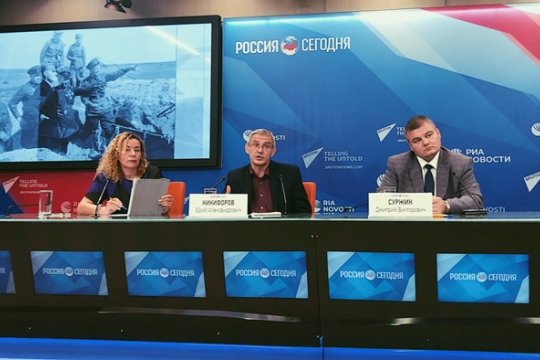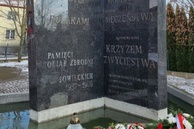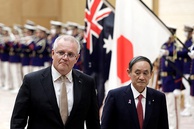Photo: A. Muradov
In August 1939, the Soviet troops, led by the then unknown Commander Georgy Zhukov, inflicted a crushing defeat on forces of the Kwantung Army of Japan in the Mongolian steppes during the Battle of the Khalkhin Gol River, thereby changing the direction of Japanese expansionism towards Pearl Harbor and the Asian colonies in Europe. The Battles of Khalkhin Gol, which began two years before the fascist invasion of the USSR, is rightly seen as one of the forerunners of the Soviet military successes in Europe during World War II. Having suffered a serious setback, militaristic Japan lost all hope of capturing Siberia and the Far East over a short-term perspective and focused on the Asia-Pacific theater of operations.
On the 80th anniversary of the Battle of Khalkhin-Gol Moscow played host to a round table which was held with the participation of Yury Nikiforov, head of the research department of the Russian Military-Historical Society, and Dmitry Surzhik, an employee of the Victory Museum and senior researcher with the Center for the History of Wars and Geopolitics of the Institute of General History of the Russian Academy of Sciences. During the event, the speakers proviced an extensive account of the Battle at Khalkhin-Gol and discussed the details of the Soviet offensive.
The battles at Khalkhin-Gol became decisive for the undeclared Soviet-Japanese border conflicts, which were waged between the Soviet Union and Mongolia, on the one side, and Japan and the puppet state of Manzhou-Go it had created, from spring to autumn 1939, on the other.
After the Japanese occupation of Manchuria in 1931, Japan turned its military eye to the Soviet territories bordering these areas. The first major Soviet-Japanese border incident, the Battle of Lake Hassan, occurred in 1938 in Primorye. Clashes between Soviet and Japanese troops were reported fairly often along the border of Manchuria.
On August 20, 1939, the Red Army, with the support of Mongolian units, launched an offensive to cordon off and eliminate Japanese groups on the Khalkhin-Gol River. By August 31, the territory of the Mongolian People's Republic had been completely cleared of Japanese troops, although this did not mark a complete end of hostilities yet. It was not until September 15 that an agreement was signed between the Soviet Union, the MPR, and Japan on the cessation of the military conflict, which came into force the next day.
“On a global scale, the Battle of Khalkhin-Gol should be considered an integral part of the entire pre-war period, considering that it produced a significant impact on the further course of history”
According to Yuri Nikiforov, from a global perspective, the Battle of Khalkhin-Gol should be considered an integral part of the entire pre-war period, because this battle had a significant impact on the further course of history. It appears particularly relevant in connection with the 80th anniversary of the Second World War and the Soviet-German Non-Aggression Pact of August 23, 1939. “It is important to view the battles at Khalkhin-Gol from a broader perspective in order to better understand the cause-effect relationship and the complexity of these events. The decisions that were passed in the Kremlin then - the signing of the Non-Aggression Pact with Germany and the Red Army's advance on Khalkhin Gol - were truly historic, as both took place almost simultaneously in exceptionally difficult conditions,” - Nikiforov said.
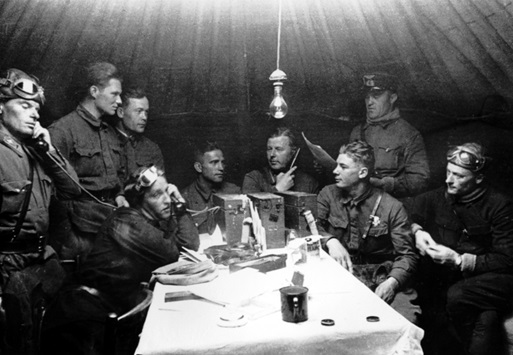
The headquarters tent of the Air Forces advanced command post of the 1st Army Group of the Red Army on Khalkhin Gol / Source: http://waralbum.ru/category/war/pacific/khalkhin_gol/
For the Soviet Union it was of crucial importance back then to prevent a war on two fronts, since the Soviet leadership was fully aware that Japan was ready to start a war against the USSR on the side of Hitler. It was against this background that Japan chose to make a kind of revenge attempt following the defeat the year earlier at Lake Hassan and invaded in May 1939 the territory of the Mongolian People's Republic (MPR), the speaker emphasized.
Japan, Nikiforov believes, pursued two main goals when it chose to go into conflict and invade the territory of Mongolia. First, it sought to force the Soviet Union to stop helping China in its war of liberation against Japanese aggressors. Given that Japan put in quite a lot of effort in the occupation of China, which the USSR supported under the Sino-Soviet non-aggression pact of 1937, the Japanese were set on defeating China at an early date and establishing a lasting occupation of the country.
"By provoking Soviet-Japanese conflicts, Japan put pressure on a number of Western countries, in particular Great Britain and the United States, in order to avoid economic sanctions on their part."
Secondly, by provoking Soviet-Japanese conflicts, Japan put pressure on a number of Western countries, in particular, on Great Britain and the United States. The Japanese repeatedly signaled the existence of the "red threat" alleging that the USSR was planning to expand into the Far East and capture Japan, which was "defending itself against communism". “Such a manipulation of the moods in the United States and Great Britain made it possible for the Japanese to avoid, if only for some time, economic sanctions by Western countries,” - Nikiforov said.
What confirms this is the fact that US President Franklin Roosevelt’s decision passed in July 1939 to suspend the trade agreement with Japan was postponed for six months. “The postponement was attributed to the fact that the West believed that the Japanese “had valiantly been fighting against communism”. How could they be deprived of the opportunity to buy military materials in the United States during this critical period? ” - the speaker said.
At that time, according to Yury Nikiforov, the Japanese had not yet chosen the direction of their further expansion. The first option envisaged an advance to the North and a simultaneous attack on the USSR in tandem with Germany for the purpose of capturing the Far East, or, in other words, the option provided for unleashing a large-scale war in the region, which required, first of all, a profound upgrade of the ground forces.
An alternative scenario was the “southern option” which provided for raising funds to finance a program to modernize the Navy for further expansion in the direction of South East Asia with a view to seize the colonies of the Western powers. Although there were considerable differences on this within the ranks of the Japanese leadership, its overwhelming majority still counted on success in the Great War.
“For Zhukov, Khalkhin-Gol was like Toulon for Napoleon. If it hadn’t been decided to send Zhukov to Khalkhin-Gol, he would have hardly caught another chance to become distinguished in such an outstanding way”.
On the one hand, Soviet General George Zhukov succeeds in mounting a decisive operation to surround and destroy Japanese troops. He thereby demonstrates to Japan the strength and power of the Red Army. The main task assigned to Zhukov is to quickly subdue the enemy, so as to save the USSR from being drawn into a prolonged armed conflict on the eastern front. Having shown his brilliancy as a military commander, Georgy Zhukov excel in his task. The speaker said: “Expert Alexei Isaev once remarked: Khalkhin-Gol for Zhukov was like Toulon for Napoleon. If there had been no decision to send Zhukov to Khalkhin-Gol, he would hardly have caught another chance to distinguish himself in such an outstanding way. ”

Commander G.K. Zhukov on Khalkhin-Gol / Source: http://waralbum.ru/category/war/pacific/khalkhin_gol/
On the other hand, Stalin and Molotov signed a non-aggression pact with Hitler Germany, which, coupled with the defeat of Japanese forces, led to an internal political crisis in Japan.
“The Japanese leadership was extremely disappointed with Germany’s moves, classifying such steps as treachery on the part of Hitler and an undisguised “stab in the back ”
The Cabinet had to resign immediately. The Japanese leadership was extremely disappointed with Germany’s actions, classifying them as treachery on the part of Hitler and an open “stab in the back”. Nikiforov believes that this is partly why Japan never ventured to start a war against the USSR in 1941-1942, when the Soviet Union was in critical condition. In 1941, Japan signed the Soviet-Japanese Neutrality Pact, which it chose not to violate directly, counting on the ultimate collapse of the Soviet Union.
Senior researcher at the Center for the History of Wars and Geopolitics of the Institute for General History of the Russian Academy of Sciences Dmitry Surzhik recalls relations between Berlin and Tokyo in the interwar period. At the end of World War I, he says, Japan, like Germany and Italy, felt "a loser among the winners."
Japan was forced to forget about its economic preferences in China and did not receive the former German colonies in the Pacific Ocean, which contributed to the growth of revenge-seeking sentiments within its upper circles. Japan was displeased with both its position in general and with the terms of the Versailles Peace Treaty. What’s more, the Japanese side was not happy about the fact that the 1922 Washington Sea Agreement put restrictions on its naval fleet.
Against this background, cooperation between Germany and Japan progressed so quickly that the year 1927 saw the opening of the first German-Japanese University. In fact, both countries felt outcasts that had suffered at the hands of the Entente and intended to strengthen their ties, which intensified visibly after Adolf Hitler came to power.
During this period, the dialogue between Japan and Nazi Germany developed mainly “behind the scenes”, as the German Foreign Ministry continued to support the Chiang Kai-shek regime. Germany continued to supply arms to the Chinese democratic regime, which fought against Japanese aggression. However, there was a kind of “shadow cabinet”, which comprised one of the most influential members and ideologists of the NSDAP Alfred Rosenberg and future Reich Chancellor Joachim von Ribbentrop.
Both politicians began to cooperate on a regular basis with Japanese Ambassador to Germany Asimo Hiroto. The ambassador was introduced to Hitler’s close circle, to the head of the Abwehr Wilhelm Canaris, to German Goering, the third most important person in the Hitler hierarchy. Finally, at Haushofer's apartment, he leads a lengthy and lively conversation with Rudolf Hess, deputy Fuhrer. Thus, all Nazi leaders at the top were inclined to support Japan. And when Ribbentrop was appointed Minister of Foreign Affairs, all these veils of secrecy vanished in a matter of seconds.
“On the one hand, Germany supported Japanese aggression, but on the other, Hitler treated his allies in the Far East superficially, with a sense of racial superiority”
On the one hand, Germany supported Japanese aggression, but on the other, Hitler treated his allies in the Far East superficially, with a sense of racial superiority, Surik said. The speaker quoted a passage from Hitler’s speech about the Japanese allies on the eve of the signing of the Non-Aggression Pact with the USSR: “We should feel the masters and treat these people at best as varnished half-monkeys who must know the whip.”
Accordingly, Hitler put his European interests above all-Union commitments. For this reason, on August 23, in the midst of fierce fighting at Khalkhin-Gol, a non-aggression agreement was signed in Moscow between Nazi Germany and the Soviet Union. The Japanese leadership understood that it was left one-on-one with the USSR. A month after the signing of the document, in October 1939, the Japanese Cabinet was replaced by a more moderate one. “An important thing to remember is that on May 14, 1941, Japan signed the Soviet-Japanese Neutrality Pact, that is, it got even with Germany for what it did in 1939,” - the speaker emphasized.
According to Surik, that Japan never attacked the Soviet Union in the years 1941-1945 is due to the fact that, firstly, a naval group which was aimed against South East Asia and against the USA, won in Asia-Pacific. And secondly, expansion in the direction of South East Asia and confrontation with the United States became more and more time-consuming, taking all the resources of Japan. Moreover, Japan was unable to quickly forget about the Molotov-Ribbentrop Pact, which the Japanese regarded as an act of blatant betrayal on the part of Germany. It would be extremely challenging to fight on two fronts with limited resources, the expert comments.
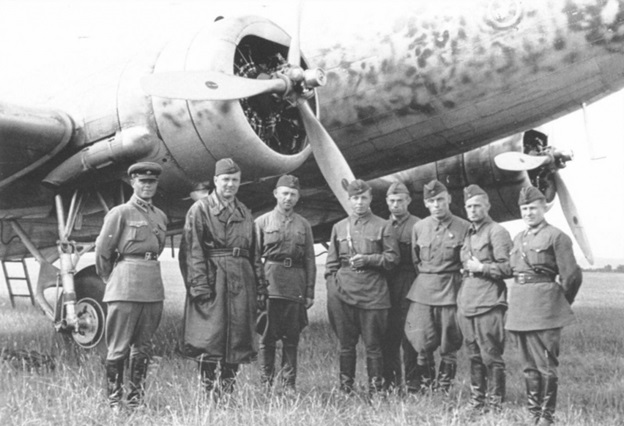
Soviet Aviators at the Douglas DC-3 Aircraft at the Ulan Bator Airfield / Source: http://waralbum.ru/category/war/pacific/khalkhin_gol/
At the end of the round table the participants pointed out an extreme importance of the Battle of Khalkhin-Gol, which took place 80 years ago. They also urged to consider this battle an integral part of the wartime period and the pre-war years. As experts said, despite the seemingly local nature of the Khalkhin-Gol conflict, this battle had far-reaching consequences and a tangible impact on the outcome of the war.
read more in our Telegram-channel https://t.me/The_International_Affairs

 12:53 22.08.2019 •
12:53 22.08.2019 •
